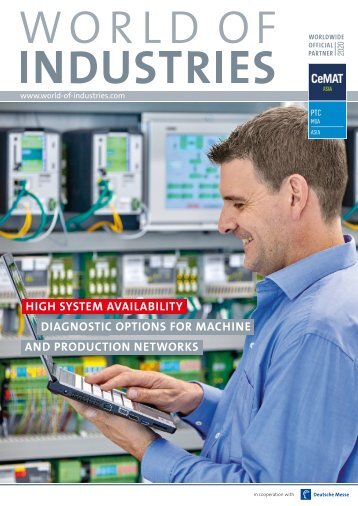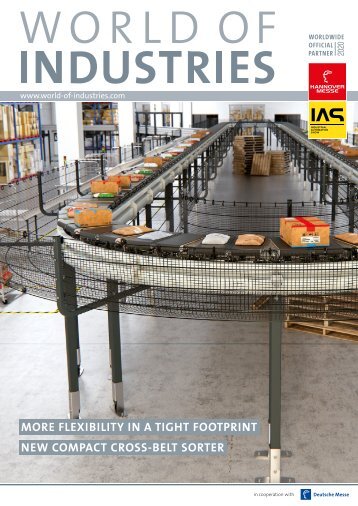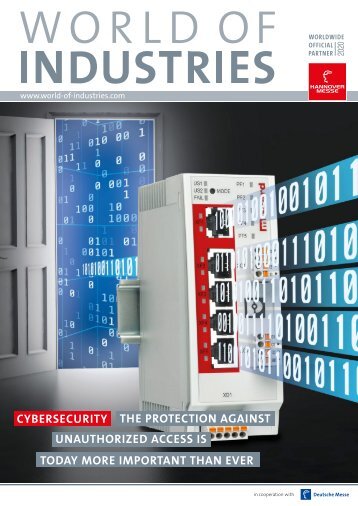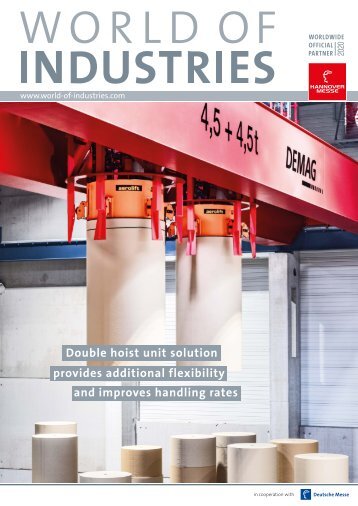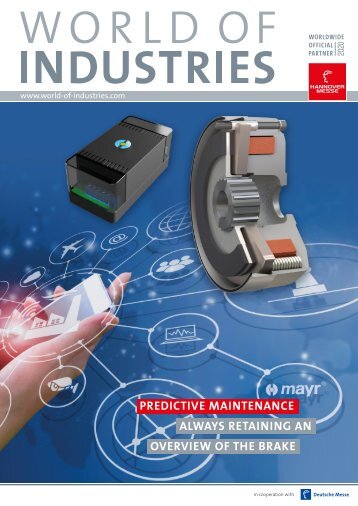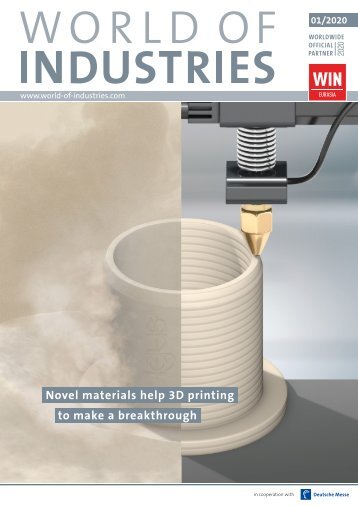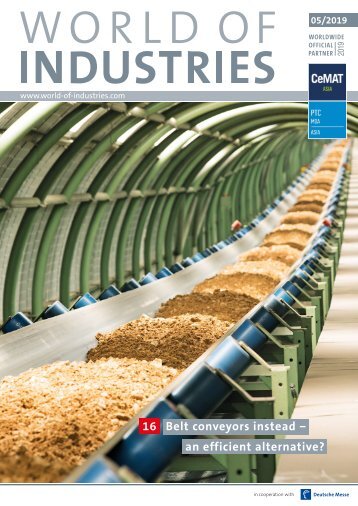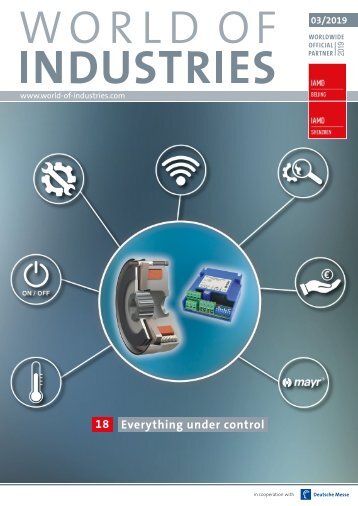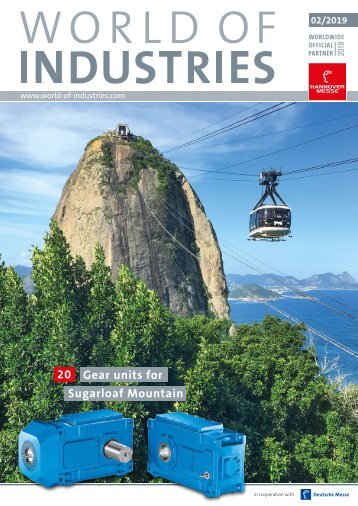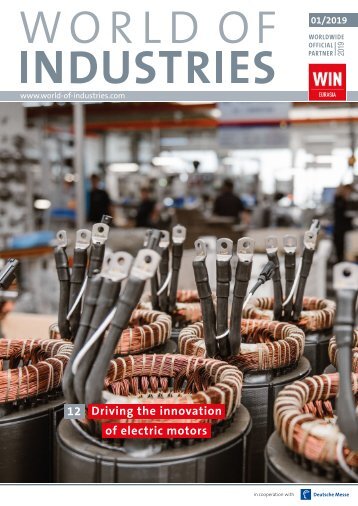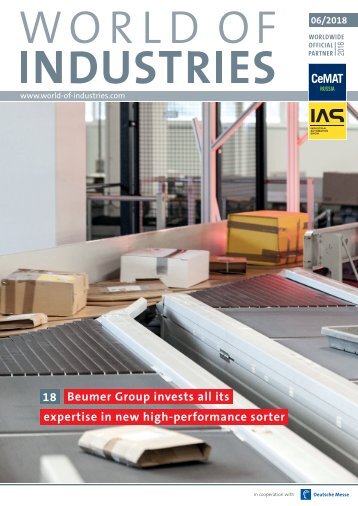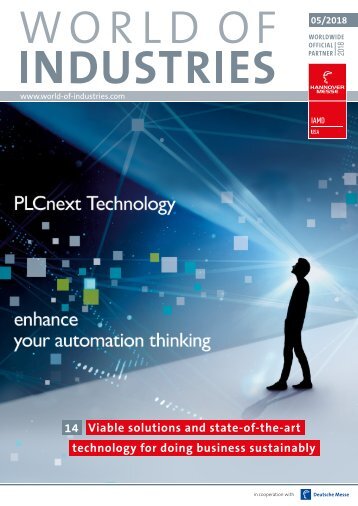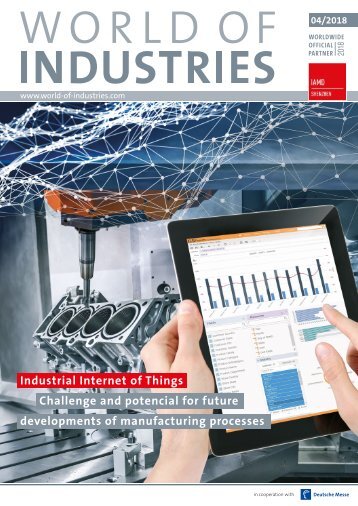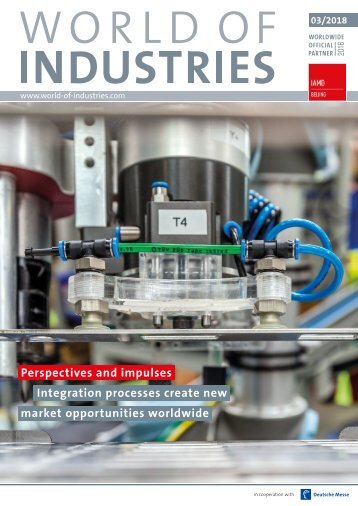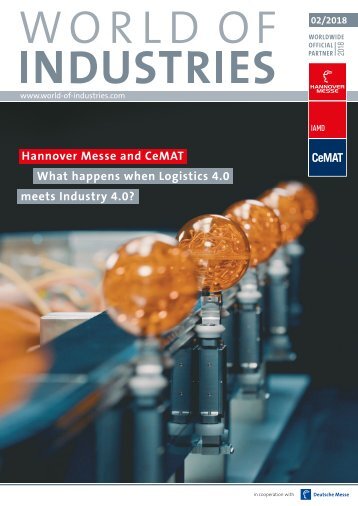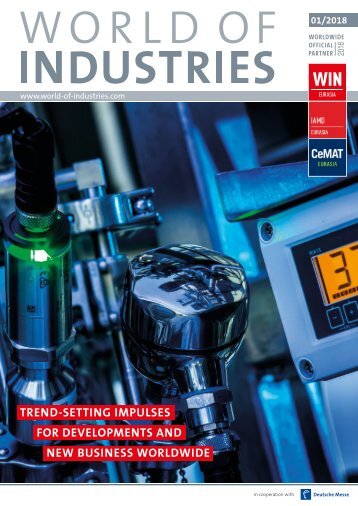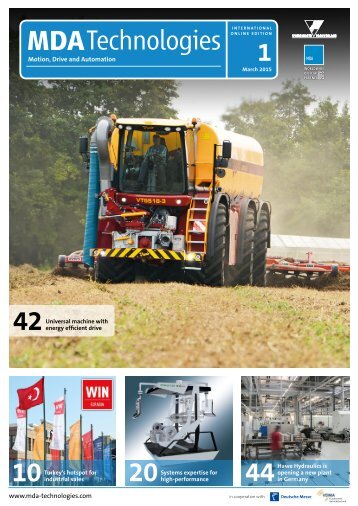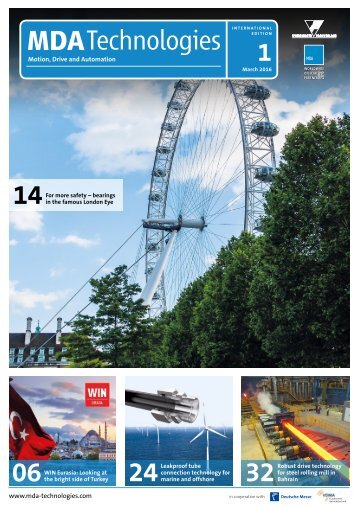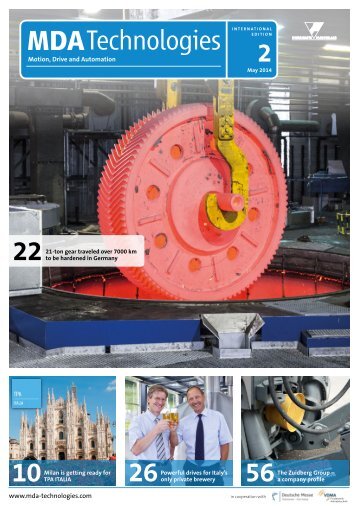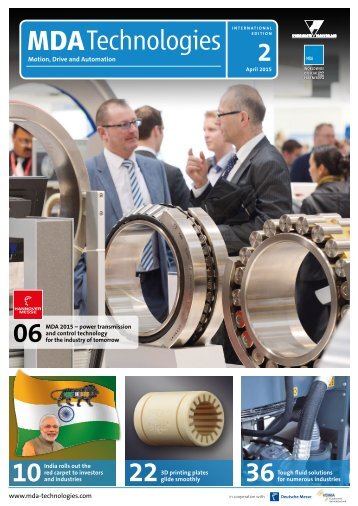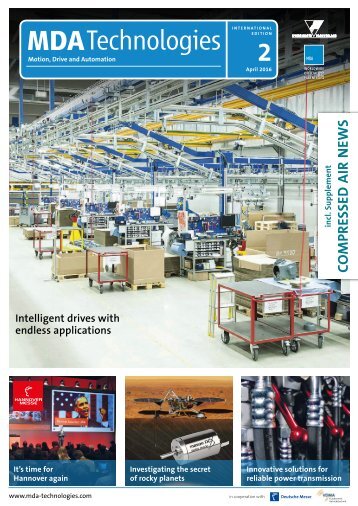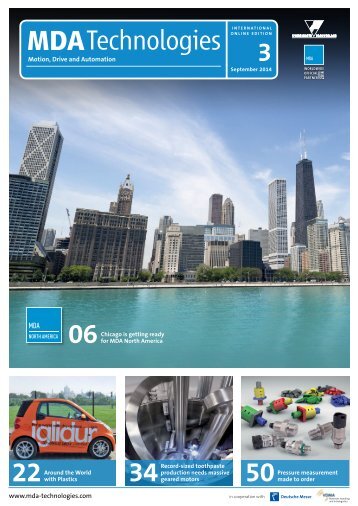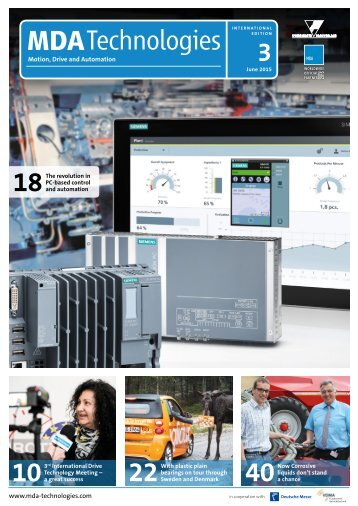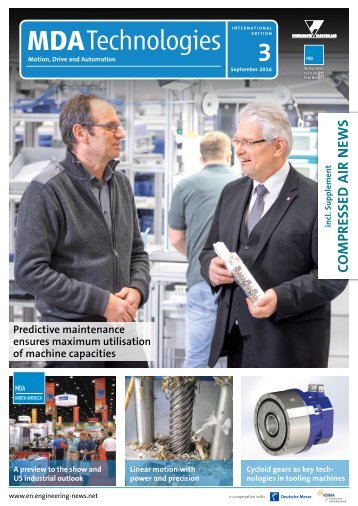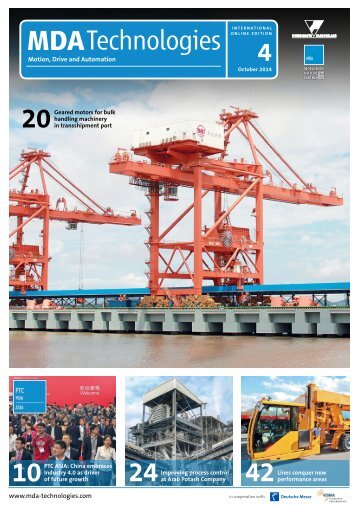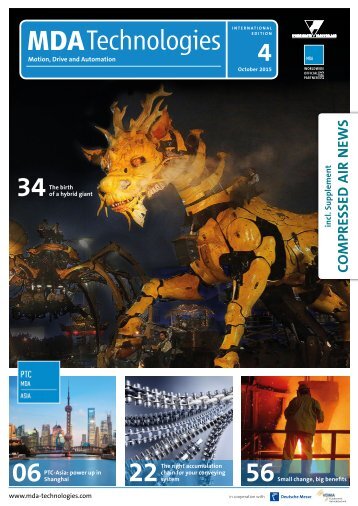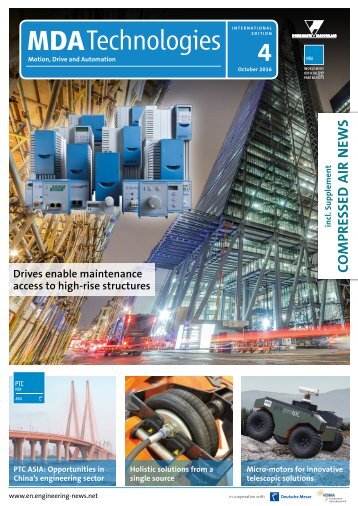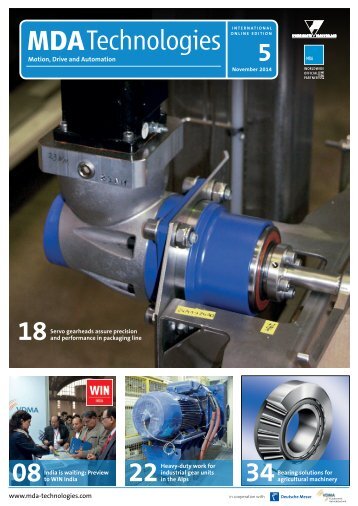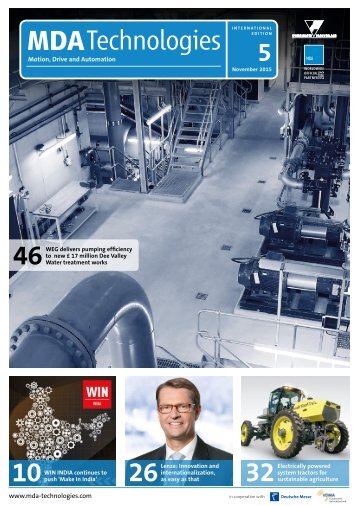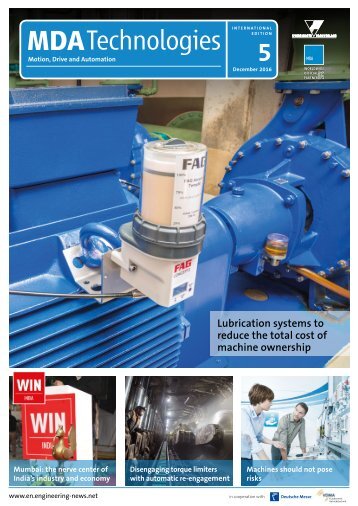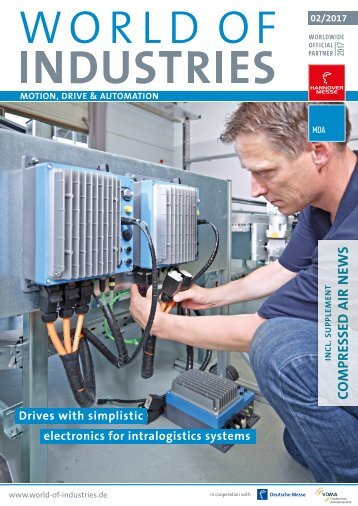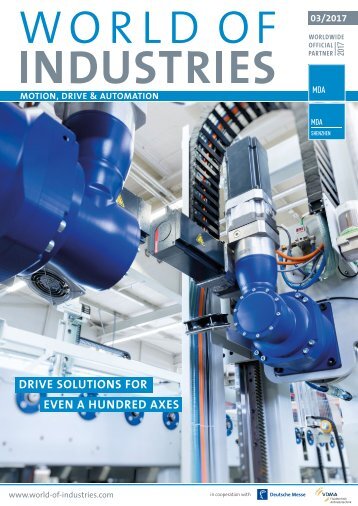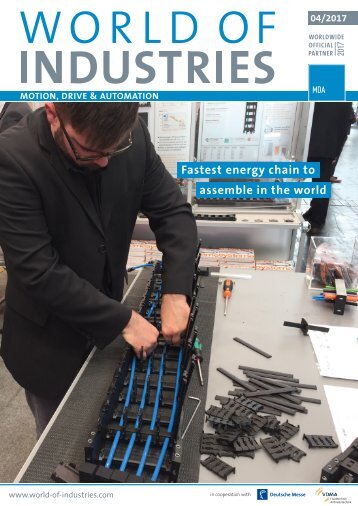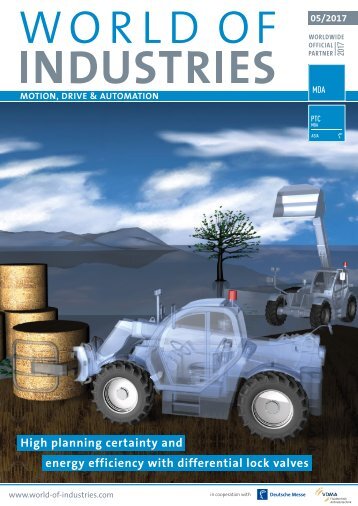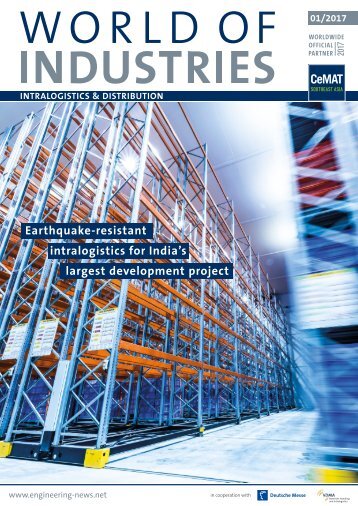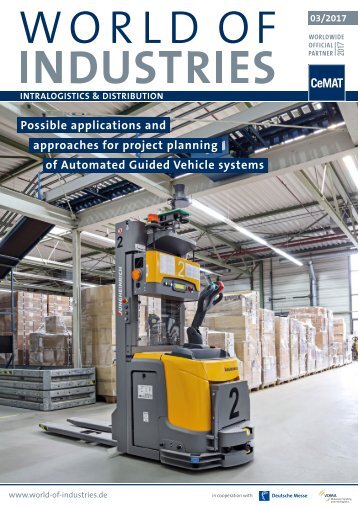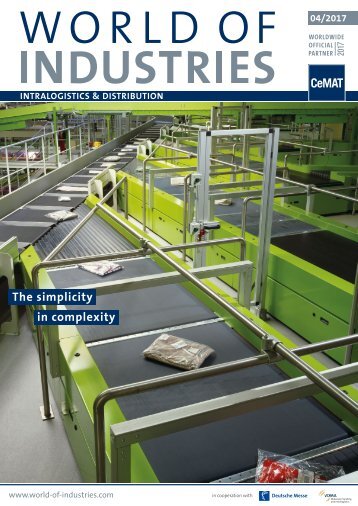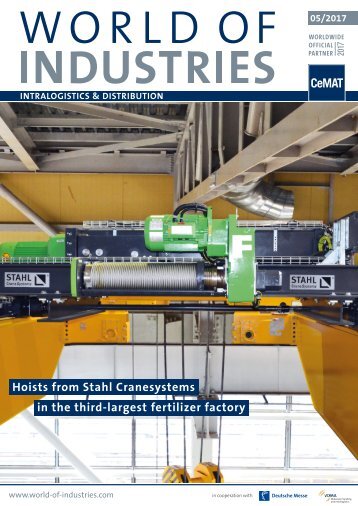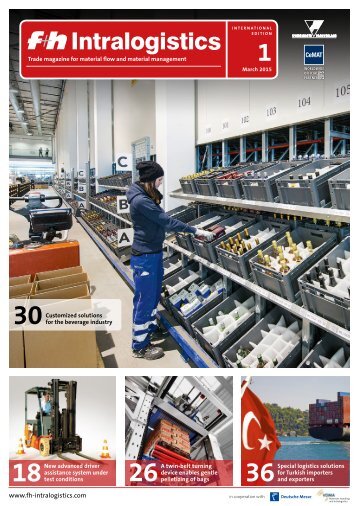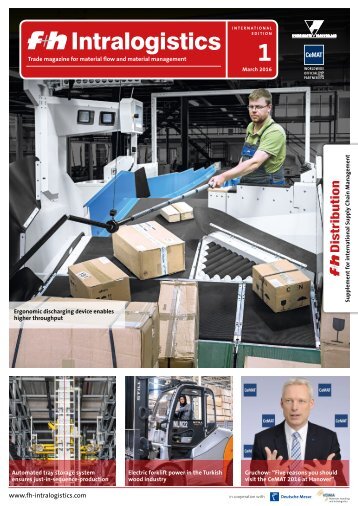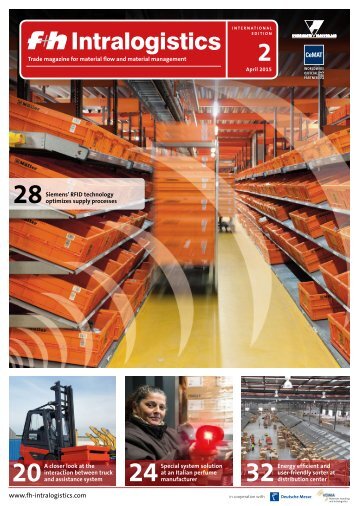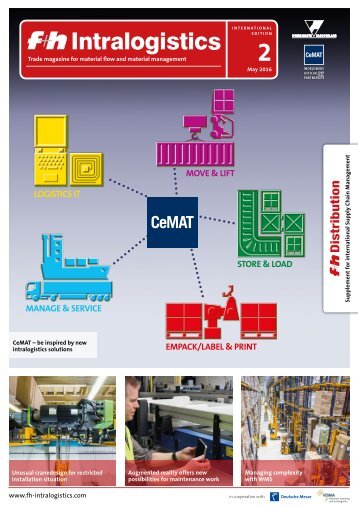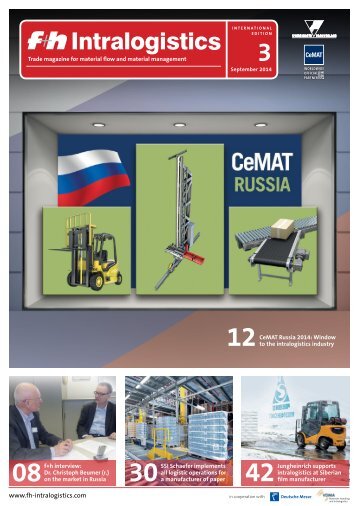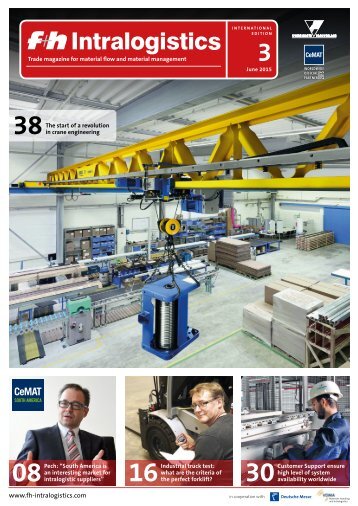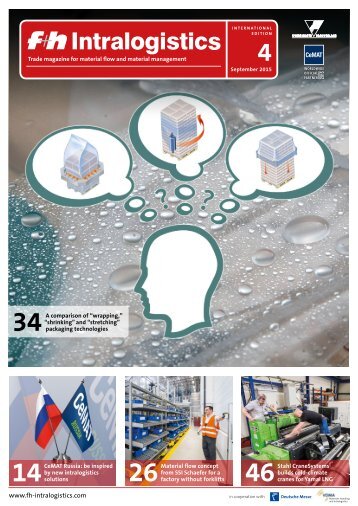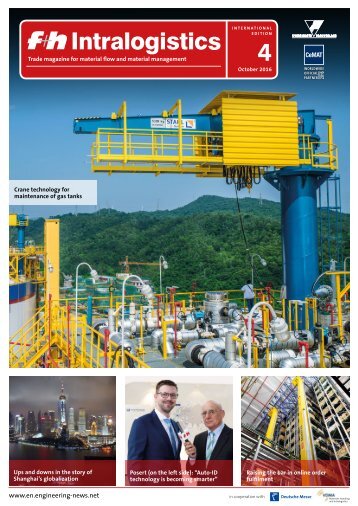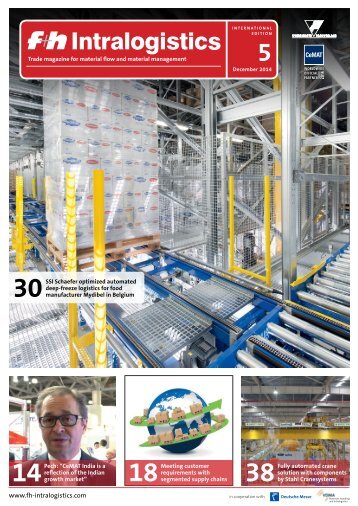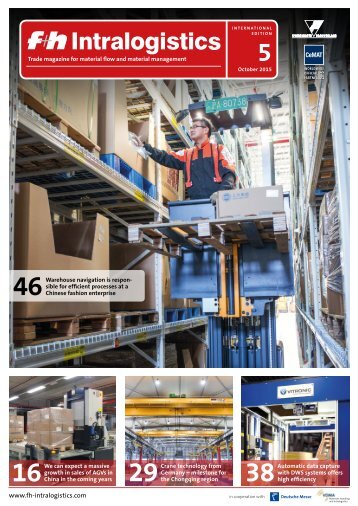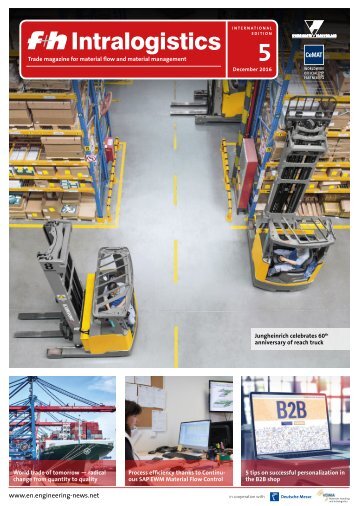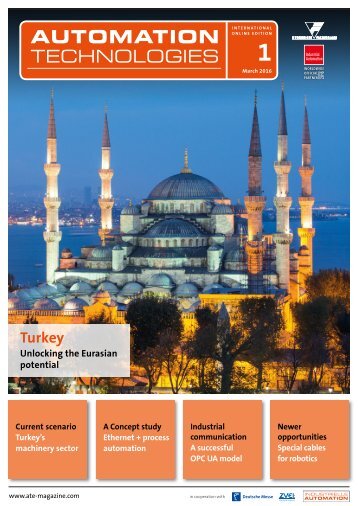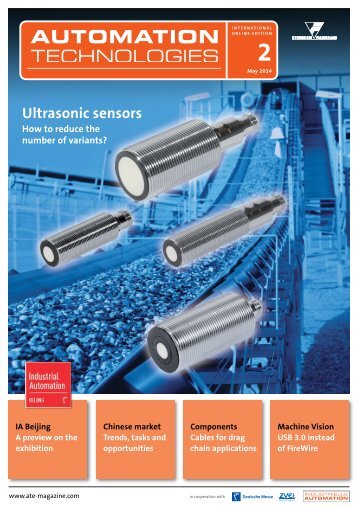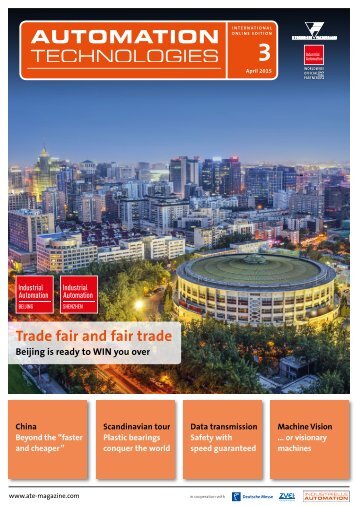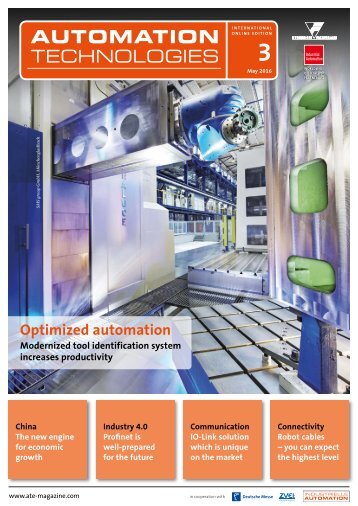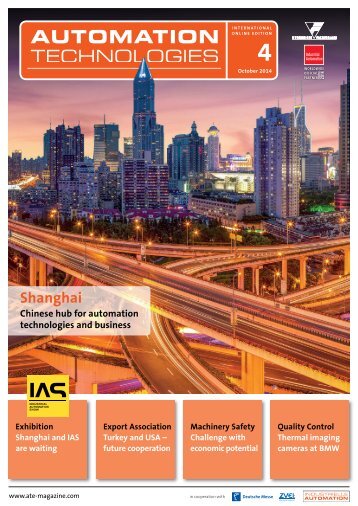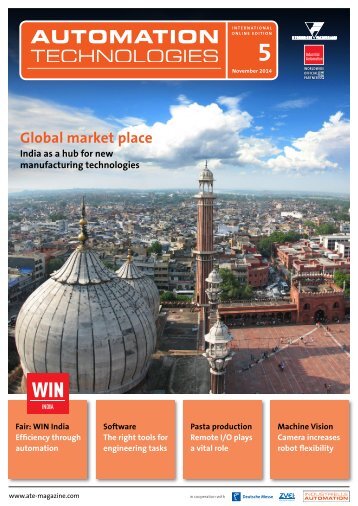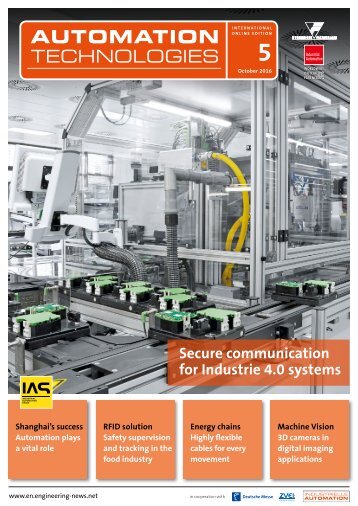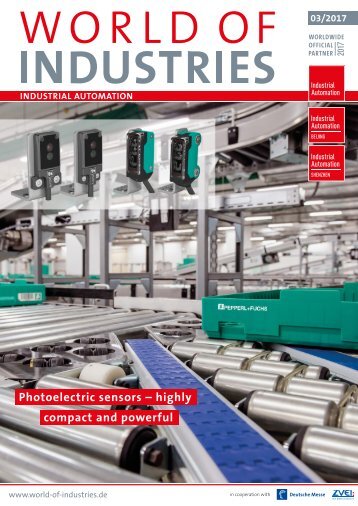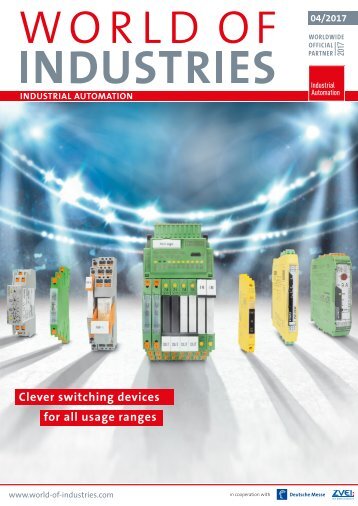Automation Technologies 4/2015
- Text
- Automation
- Technologies
MACHINE VISION High
MACHINE VISION High speed imaging solution with no motion blurring due to better exposure time and sensor precision Motion blurring due to inadequate exposure time High speed imaging for high speed amusement Razor sharp images of objects moving in high speeds are extremely important in industries ranging from food beverage and pharmaceutical to machinery makers. These images provide the engineer the ability to see, analyse and make adjustments to the complicated interactions of various components Apart from the manufacturing industry, they are also important in formula-1 racing events and the roller coaster rides all over the world. Roller coasters and souvenir pictures go hand in hand. For millions of people round the globe, the roller coasters rides are incomplete without a souvenir picture taken of them at the most thrilling point of the ride. With increasing complexities of the rides, the technical challenges in capturing those sharp images also increase. Only a specialist in vision technology can deal with this kind of specialised requirement of high speed imaging system. Shutters: mechanical or electronic Typically cameras with DSLR (Digital Single-Lens Reflex) technology which feature mechanical shutters are used. This system works well and provides satisfactory image solutions but it also comes with some limitations. It has a limited lifetime usually of around 100,000 exposures, before the lens assembly AUTOMATION TECHNOLOGIES 4/2015
MACHINE VISION needs to be replaced. These cameras also have an inadequate frame rate for the faster rides. The alternative to this are the industrial vision cameras which have electronic shutters instead of a mechanical shutter. Exposure time is a very important factor in image capturing. If the exposure times are not appropriate, then for fast rides it means ‘motion blurring’. Short or very short exposure times are needed to avoid this motion blurring for a fast moving scene like a roller coaster ride. Here short exposure time refers to the time required by the object to move by less than 1 pixel on the camera sensor during the exposure. Apart from appropriate exposure time, another important factor is precision. In order to ensure that the exposure of the camera occurs exactly when the object is in the correct position, the camera sensor must be precisely triggered. For precise triggering great care must be taken to assess and reduce all of the factors that can influence delays from initiating a signal to the resultant action in the sensor in order to ensure the required imaged is acquired. In the case of the rides, a number of factors affect the triggering required. These include whether the ride (car) is accelerating or decelerating, how many rows of seats there are in each car that need to be imaged, how many cars will be passing the imaging point and the spacing between the cars. The imaging solution Munich based machine vision specialist Stemmer Imaging was asked to design and supply the complete camera and timing solution, engineered to offer the flexibility to be adapted to individual rides, while Picsolve, an image capture partner for leisure and entertainment industry, took responsibility for the lighting and software. The system consists of a camera head mounted at the appropriate position on the ride, and a base unit containing power, trigger timer controller, opto-isolated trigger input, and network switch. The base unit also provides the trigger out to the lighting unit. The camera head features a high resolution colour camera, lens and lens controller mounted in an IP67 enclosure with integrated heater and screen wiper enabling operation in all weather conditions. The camera provides 5 MP resolution and can operate at 29 Fps in burst mode. Remote focus and aperture control is essential since the camera heads are mounted in difficult locations and need to accommodate changing light conditions. Colour imaging is a complex process which is a function of the illumination method being used and the camera technology. Additional image processing is sometimes required to allow the output image to match the colour quality of DLSR cameras. While the camera used gives excellent colour rendition under the part daylight, part flashlight illumination used on the ride an on-board colour correction capability using a colour recognition and colour calibration tool can deliver corrected colours in all lighting situations. The base unit features an ethernetenabled trigger timing controller which provides very flexible triggering capabilities that can be reconfigured on the fly if required and offers the possibility to programme over 25 timing variations on a single ride. Picsolve software takes control of the trigger timing unit and is programmed for the specific ride to provide the appropriate triggers back to the camera. Fast response and future-proof design Stemmer Imaging has already shipped the first camera and base units to Picsolve for deployment at theme parks across Europe. The project took just two months from initial discussions to prototype units being delivered, with production units following soon after. Since the cameras are generally mounted in locations where access is difficult, the entire camera head is designed for easy interchange and it can be swapped in and out for service and routine maintenance. Apart from the camera’s on-board colour correction capability it also has a number of other features that could be invoked in the future, if required. Firstly it contains on-board memory so if the system is used on rides which require a higher than normal image capture rate, then images can be buffered in the camera before transmission. In addition, jpeg compression is available if needed, depending on data rate constraints on the network back to the paystation. Photographs: Teaser Fotolia, Stemmer Imaging www.stemmer-imaging.com About Company name: Stemmer Imaging GmbH Headquarters: Puchheim, Germany Turnover: € 77 Million Employees: 230 all over Europe Products: Illumination systems, Optics, Industrial cameras, smart cameras and complete imaging accessories and Imaging software ‘Common Vision Blox’ AUTOMATION TECHNOLOGIES 4/2015
- Page 1 and 2:
INTERNATIONAL ONLINE EDITION 4 Octo
- Page 3 and 4:
EDITORIAL China’s progress in aut
- Page 5 and 6:
COLOMBIA SLOVAKIA TABLE OF CONTENT
- Page 7 and 8:
Endress+Hauser acquisitions in Colu
- Page 9 and 10:
How to assess image quality? Images
- Page 11 and 12:
2. RUBRIZIERUNGSEBENE I 1. RUBRIZIE
- Page 13 and 14:
AUTOMATION TECHNOLOGIES The product
- Page 15 and 16:
NEWS AND MARKETS change of China fr
- Page 17 and 18:
ead article AUTOMATION TECHNOLOGIES
- Page 19 and 20:
AUTOMATION TECHNOLOGIES video fair
- Page 21 and 22:
NEWS AND MARKETS next page China is
- Page 23 and 24:
AUTOMATION TECHNOLOGIES read articl
- Page 25 and 26:
NEWS AND MARKETS the Ruhr area with
- Page 27 and 28:
AUTOMATION TECHNOLOGIES read articl
- Page 29 and 30:
AUTOMATION TECHNOLOGIES read articl
- Page 31 and 32:
ead article AUTOMATION TECHNOLOGIES
- Page 33 and 34:
ead article AUTOMATION TECHNOLOGIES
- Page 35 and 36:
ead article AUTOMATION TECHNOLOGIES
- Page 37 and 38:
ead article AUTOMATION TECHNOLOGIES
- Page 39 and 40:
AUTOMATION TECHNOLOGIES read articl
- Page 41 and 42:
ead article AUTOMATION TECHNOLOGIES
- Page 43 and 44:
ead article AUTOMATION TECHNOLOGIES
- Page 45 and 46:
ead article AUTOMATION TECHNOLOGIES
- Page 47 and 48:
ead article AUTOMATION TECHNOLOGIES
- Page 49 and 50:
ead article
- Page 51 and 52:
AUTOMATION TECHNOLOGIES Products un
- Page 53 and 54:
ead article
- Page 55 and 56:
ead article AUTOMATION TECHNOLOGIES
- Page 57 and 58:
ead article AUTOMATION TECHNOLOGIES
- Page 59 and 60:
Kyland Technology’s new series of
- Page 61 and 62:
China’s progress in automation ED
- Page 63 and 64: NEWS AND MARKETS dustrial transform
- Page 65 and 66: NEWS AND MARKETS Seminars, workshop
- Page 67 and 68: NEWS AND MARKETS machinery that inc
- Page 69 and 70: NEWS AND MARKETS impacts does this
- Page 71 and 72: NEWS AND MARKETS next page Why are
- Page 73 and 74: NEWS AND MARKETS features of the pr
- Page 75 and 76: Endress+Hauser training rig provide
- Page 77 and 78: SENSORS AND MEASUREMENT At the end
- Page 79 and 80: SENSORS AND MEASUREMENT characteris
- Page 81 and 82: SENSORS AND MEASUREMENT next page O
- Page 83 and 84: SENSORS AND MEASUREMENT 50 ms or mo
- Page 85 and 86: SENSORS AND MEASUREMENT means that
- Page 87 and 88: CONTROL AND DRIVE TECHNOLOGY n Adop
- Page 89 and 90: CONTROL AND DRIVE TECHNOLOGY Real t
- Page 91 and 92: CONTROL AND DRIVE TECHNOLOGY LCA Au
- Page 93 and 94: CONTROL AND DRIVE TECHNOLOGY comple
- Page 95 and 96: Harzer Antriebstechnik GmbH Harzer
- Page 97 and 98: CONTROL AND DRIVE TECHNOLOGY next p
- Page 99 and 100: CONTROL AND DRIVE TECHNOLOGY cates
- Page 101 and 102: 02 The display integrated in the co
- Page 103 and 104: INDUSTRIAL COMMUNICATION Product Ma
- Page 105 and 106: 2. RUBRIZIERUNGSEBENE I 1. RUBRIZIE
- Page 107 and 108: INDUSTRIAL COMMUNICATION next page
- Page 109 and 110: SLOVAKIA 2. RUBRIZIERUNGSEBENE I 1.
- Page 111 and 112: COMPONENTS AND SOFTWARE Simulating
- Page 113: COMPONENTS AND SOFTWARE plug-in uni
- Page 117 and 118: MACHINE VISION 01 Combining thermal
- Page 119: MACHINE VISION TG165 thermal imagin
Inappropriate
Loading...
Mail this publication
Loading...
Embed
Loading...

